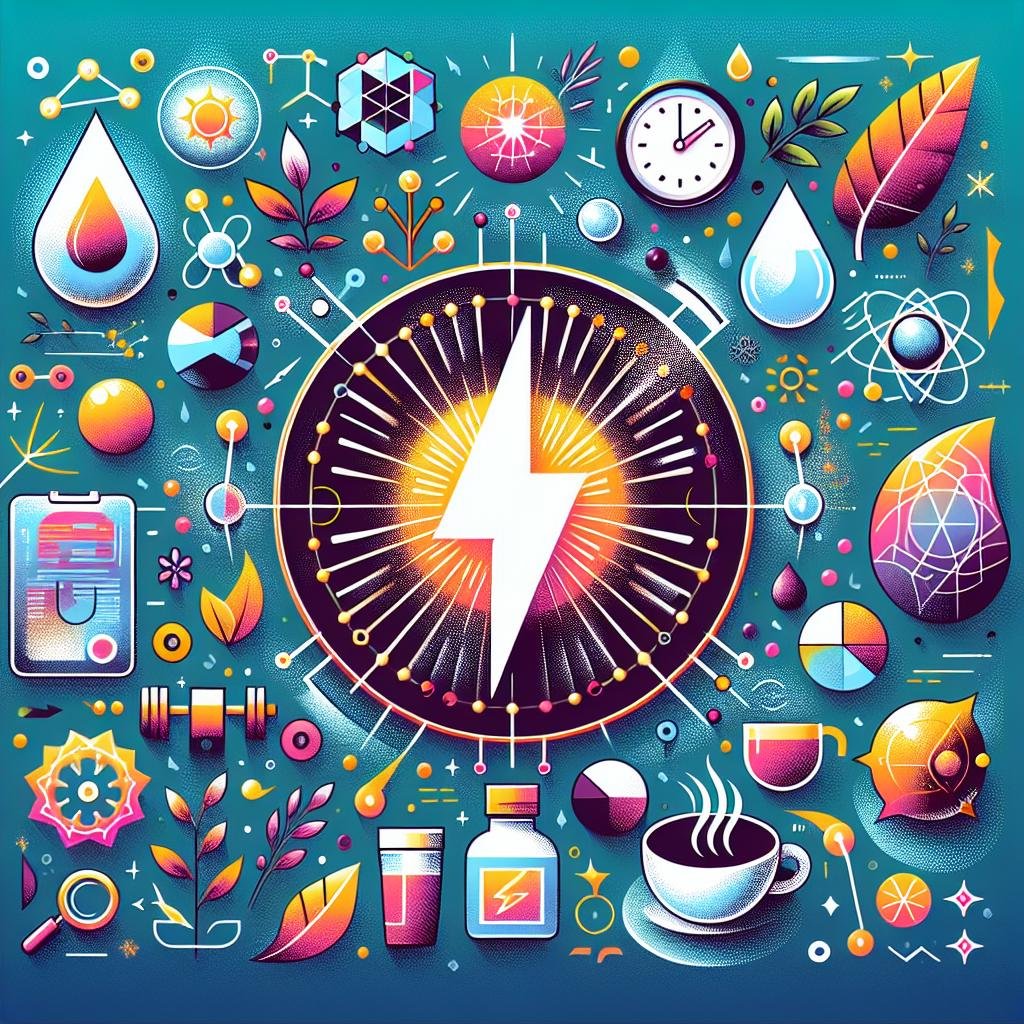How to Stay Energized While Intermittent Fasting: Unlocking Your Inner Vitality
In a world that often feels perpetually rushed, the quest for balance has led many down the path of intermittent fasting. This practice, which alternates between periods of eating and fasting, promises a myriad of health benefits, from weight loss to improved metabolic function. However, as the clock ticks during those fasting hours, it’s not uncommon to encounter the dreaded energy slump. So, how can one maintain vitality while embracing this time-honored eating pattern? Enter the art of staying energized amidst fasting. In this article, we’ll explore practical strategies and insightful tips to help you harness your energy, ensuring that your fasting journey is not only sustainable but also invigorating. Whether you’re a fasting novice or a seasoned practitioner, discover how to keep your spirits high and your energy levels steady, transforming your approach to nourishment and vitality.
Strategies for Sustaining Energy Throughout Your Fasting Window
Maintaining your energy levels during fasting can be a challenge, but with the right strategies, you can thrive even when nourishing your body with fewer calories. Focus on hydration; drinking plenty of water is essential not only for keeping energy levels up but also for curbing hunger pangs. Additionally, consider sipping on herbal teas or black coffee, which can provide a pleasurable ritual without adding calories. Incorporate light movement, such as stretching or brisk walking, to stimulate circulation and boost your mood without draining your reserves.
Another vital element is your food choices during eating windows. Aim for nutrient-dense foods that provide lasting energy. Here’s a simple overview of effective options:
| Food Group | Examples | Benefits |
|---|---|---|
| Proteins | Lean meats, fish, eggs | Sustains muscle mass, stabilizes blood sugar |
| Healthy Fats | Avocados, nuts, olive oil | Provides satiety, supports brain health |
| Complex Carbs | Whole grains, legumes, vegetables | Delivers sustained energy, rich in fiber |
Incorporating these elements into your daily routine can help create a balanced approach to intermittent fasting, ensuring you’re not only able to endure your fasting window but truly thrive during it.

Nutrient-Dense Foods to Fuel Your Eating Period
To make the most of your eating window while intermittent fasting, incorporating nutrient-dense foods can be a game-changer. These foods not only provide essential vitamins and minerals but also help maintain your energy levels throughout the day. Prioritizing whole, unprocessed options ensures that you’re fueling your body with the best resources. Focus on a variety of foods, such as:
- Leafy Greens: Spinach, kale, and Swiss chard are packed with nutrients and low in calories.
- Lean Proteins: Chicken, turkey, beans, and legumes promote muscle maintenance and keep you feeling full.
- Healthy Fats: Avocados, nuts, and olive oil support brain health and hormone balance.
- Whole Grains: Quinoa, brown rice, and oats provide sustained energy and fiber.
- Fruits: Berries, oranges, and apples offer antioxidants and hydration.
Additionally, it’s beneficial to organize your meals to maximize nutrient absorption. Here’s a simple table highlighting some food pairings that work harmoniously to enhance nutrient intake:
| Food Pairing | Benefit |
|---|---|
| Spinach + Lemon | Boosts iron absorption. |
| Quinoa + Beans | Complete protein source. |
| Chickpeas + Olive Oil | Enhances nutrient absorption of carotenoids. |
| Berries + Yogurt | Probiotics and antioxidants for gut health. |
Employing these strategies can help ensure that your food choices during your eating period are not only satisfying but also effectively keep your energy levels high throughout your fasting routine.

Mindfulness Techniques to Enhance Your Fasting Experience
Incorporating mindfulness into your intermittent fasting routine can transform the way you experience hunger and energy levels. By practicing mindfulness, you can cultivate a deeper awareness of your body’s signals and desires. Here are some effective techniques to enhance your fasting journey:
- Breathe Deeply: Engage in deep-breathing exercises to center yourself when cravings arise. Inhale for a count of four, hold for four, and exhale for four.
- Meditate: Set aside a few minutes for meditation. Focus on your breath or use guided meditation to redirect attention from food.
- Stay Present: During fasting periods, savor the moments you are free from distractions. Observe your surroundings and appreciate the experience of being present.
- Gratitude Journaling: Reinforce your mental state by writing down things you are grateful for each day. This helps build a positive mindset during fasting.
Using mindfulness techniques can also prevent mindless eating and help you maintain a healthy relationship with food. Consider integrating the following mindful practices into your fasting schedule:
| Time of Day | Mindfulness Practice |
|---|---|
| Morning | Meditation and Deep Breathing |
| Midday | Gratitude Journaling |
| Evening | Reflective Walks in Nature |

Hydration and Its Impact on Energy Levels During Intermittent Fasting
Staying hydrated is crucial for maintaining optimal energy levels, especially during intermittent fasting. When your body is deprived of food, it relies heavily on stored energy. However, dehydration can lead to fatigue, reduced cognitive function, and even irritability, making your fasting experience more challenging. Here are some key hydration tips to consider during your fasting periods:
- Drink Plenty of Water: Aim for at least 8-10 glasses of water daily to keep your body functioning optimally.
- Add Electrolytes: Incorporate electrolyte-rich beverages or supplements to replenish vital minerals lost during fasting.
- Include Herbal Teas: Herbal teas can provide antioxidants and hydration without breaking your fast.
It’s also important to understand how different types of beverages impact your hydration levels. Below is a simple comparison table that outlines some common choices:
| Beverage | Hydration Benefit | Notes |
|---|---|---|
| Water | High | Essential for hydration; zero calories. |
| Herbal Tea | Moderate | Calorie-free and can aid digestion. |
| Caffeinated Drinks | Low to Moderate | Can cause diuretic effect; moderation is key. |
| Fruit Juices | Moderate | High in sugar; best consumed in moderation. |
By prioritizing hydration, you can significantly enhance your energy levels and overall well-being while practicing intermittent fasting. Remember to listen to your body and adjust your fluid intake according to your activity levels and personal needs.
In Summary
As you embark on your journey through intermittent fasting, remember that maintaining your energy levels is a delicate balance of mindful choices and self-awareness. By integrating nourishing foods, staying hydrated, and prioritizing rest, you can turn the challenge of fasting into an empowering experience. Embrace the rhythms of your body and listen closely to its needs; after all, each day presents a new opportunity to refine your approach. With a little experimentation and dedication, you can thrive while fasting, transforming potential fatigue into renewed vitality. So, set forth with confidence, knowing that the path to sustained energy lies within your choices. Happy fasting!

